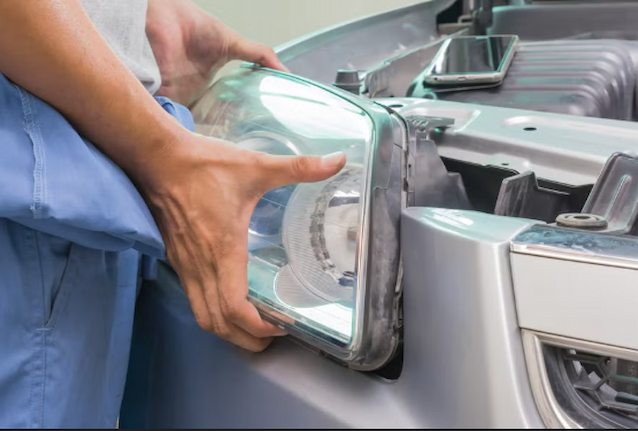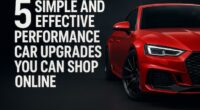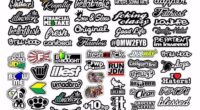Car Body Replacement Parts: Important Things You Should Know
Exterior car parts do more than just define the look of your vehicle. They actively work to ensure occupant and driver safety, shield vital engine and internal parts from outside damage, and have a huge say in how you car performs. Combining the aesthetics of brand looks and distinct shapes with protection and functionality means basic parts like bumpers, grilles and body panels do more than most motorists would like to acknowledge.
Ensuring Safety in All Driving Conditions
One of the key roles of car body parts is maintaining vehicle integrity in the event of collisions. Front and rear bumpers combine with defined chassis crumple zones to absorb the impact of accidents and carpark scuffs and ensure all parts in between remain functional and free of damage. Reinforced designs and impact resistant materials also dissipate impact and prevent damage to the cabin, keeping drivers and passengers safe.
Besides front and rear end protection, other parts shield the car from side impact while protecting key underbody parts like the transmission and exhaust. Doors feature reinforced frames to withstand direct collisions and are fitted with numerous safety systems such as auto locking and crash detection and manual release mechs in the event of emergencies. Similarly, fenders prevent road debris from spinning wheels damaging the paint and electrics and undercar shields reduce the likelihood of damage to underbody components from road obstacles, potholes and debris.
Aerodynamic Benefits
Streamlined vehicle designs aid aerodynamics, reducing drag from oncoming air and providing more stability and control at all speeds. Front bumpers integrate canards, air dams and splitters to disperse air over, under and around the vehicle. This helps with grip in tires by increasing downforce, while balancing the amount of lift aiming to get your car airborne.
Splitters and front bumpers are paired with other parts to maximize aero benefits. Parts also include rear spoilers to tame remnant air reaching the rear axle, air vents and diffusers below the rear bumpers to disperse air pooling under the vehicle (and creating turbulence and lift) and side skirts added to rocker panels to increase lateral stability in turns. Combined, the parts ensure more feel through the steering wheel and tires, increased stability in turns and at higher speeds, and with reduced drag, lower fuel consumption. And when paired with performance extras like levelling springs and spacers, coilovers or performance tire and alloy combos, the parts improve composure (with the lower center of gravity and improved traction) and handling characteristics unmatched in factory vehicles.
Improved Functionality

Car parts compromised in collisions and daily wear reduce functionality. Common replacement components in this context are the headlights, taillights and indicators. Besides illuminating the road ahead, lights warn other drivers of your presence in low-light conditions and bad weather, and raise awareness as to your intention of turning, merging or backing up. Busted covers, flickering, dimming and moisture buildup are common signs you’ll need working replacements. The good news for motorists is that they can choose OEM parts for proven fit and functionality, or go with aftermarket options that raise build quality with superior materials and increase brightness and overall visibility with newer lighting technologies like LEDs and lasers.
Side rearview mirrors are another exterior vehicle component that’s among the first to bear the brunt of side collisions or carpark accidents. Think damaged housings, missing plastics, faulty electrics and reduced visibility with cracked glass. This complicates simple maneuvers such as merging and reversing. Newer vehicles integrate indicators and safety systems such as blind spot monitoring, so malfunctioning mirror may can more headaches than just compromising the view to the side and rear of the vehicle.
Aesthetics and Brand Identity
Grilles define the face of the vehicle. Distinct mesh wire and bar designs in plastics or metals have become instantly recognizable, from the kidney grilles in generations of Bimmers to the vertical bars in Jeep models, or the fine mesh in Bentleys. The parts speak volumes of vehicle intent and brand heritage. Besides aesthetics, consider grilles for their protective role in shielding radiators from airborne debris, and redirecting oncoming air for engine cooling.
Look to replacements in grilles that are cracked, are misaligned or lost their luster from prolonged sun exposure. OEM replacements again offer assured fit, but the wider variety of aftermarket options allows for more customization, such as replicating factory designs in higher trim cars or choosing performance varieties that combine with other car body parts to improve aerodynamics or provide secondary cooling to brake and suspension components. Parts can also be chosen for higher strength and improved durability with engineered materials that also shed weight.
Key Buying Considerations
Whether your vehicle has been in an accident, sustained damage from tampering or succumbed to daily wear, the wide selection of both original equipment and aftermarket auto body parts ensures vehicles are restored to factory condition, with proven fit and functionality. Consider part and vehicle numbers for specific makes, models and production years. Look for quality materials such as reinforced plastics, rust-resistant stainless steel and aluminum or carbon fiber for lower weight and increased street cred in cars undergoing major performance upgrades. And define your needs in terms of repairs or upgrades to select parts in different price brackets. Lastly, consider a professional fit to prevent parts dislodging, damaging adjacent components and spoiling your vehicle’s appearance.



